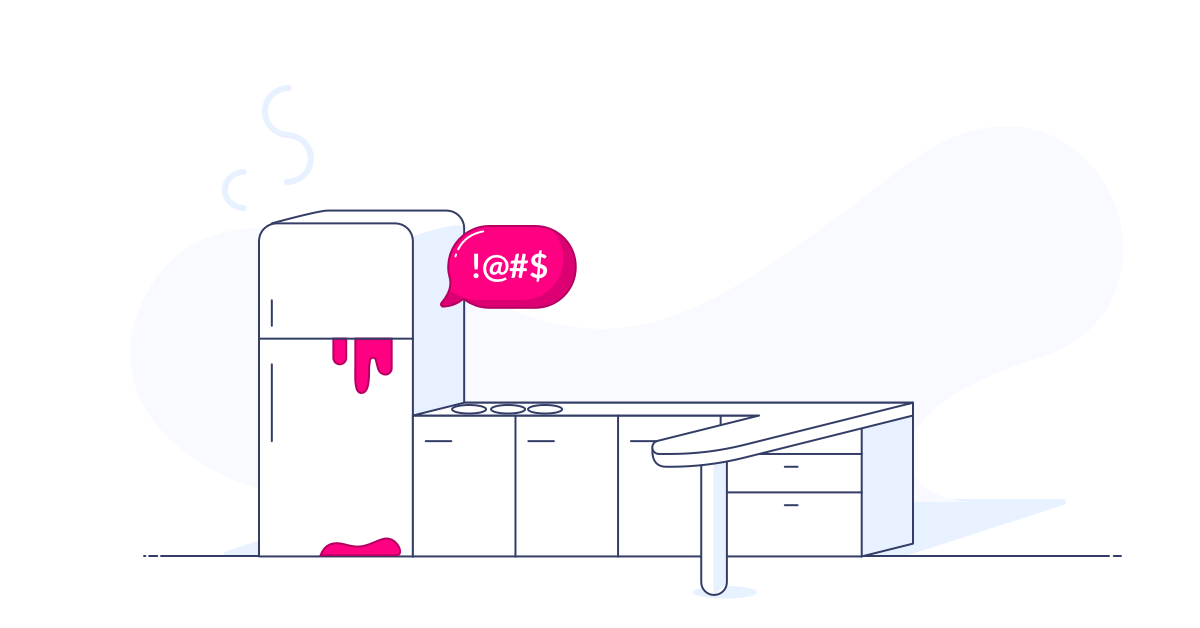Loss of use coverage— sometimes called additional living expenses (ALE), and (code-named ‘Coverage D’ in your insurance policy,) is a type of coverage your insurance company provides if your place becomes uninhabitable due to a covered peril. It’s one of the six common insurance coverages you’ll find on your basic homeowners insurance policy, and one of five types on a renters insurance policy.
Think about all the expenses you could rack up above your normal daily spending if you had to leave your place: hotel bills, eating out, laundry… the list goes on. Not being able to live at your own place is expensive. But luckily, your insurer will be there to help.
Keep in mind, though, you’ll only get reimbursed if your home is deemed unlivable and the reason you weren’t able to live at home was something your insurance company agreed to cover in the first place.

How does loss of use coverage work?
Imagine your house becomes uninhabitable after a fire at your neighbor’s home spreads to yours.
Both renters and homeowners loss of use coverage could additionally help pay for temporary living expenses, such as hotel or Airbnb stays, increased food costs, and even pet boarding if necessary, if covered perils cause your place to become unlivable.
During this period, it’s vital to keep detailed records of all additional living expenses. Save all receipts and submit them to your insurance provider for review as part of your claim’s final settlement. By doing so, you can be confident that even while you’re temporarily displaced, you won’t struggle to maintain your normal standard of living.
What does loss of use insurance cover?
Loss of use provides multiple coverages for when you are displaced from your home due to a covered peril. Let’s break down the three main coverages under loss of use.
Additional living expenses and loss of use coverage
If your place becomes uninhabitable due to one of the covered perils laid out in your policy, you can submit necessary expenses above your normal day-to-day spending.
It may help you out with things like:
- Housing (hotel, motel, etc.)
- Moving costs
- Temporary storage of your stuff
- Eating out (above the norm)
- Grocery bills (above the norm)
- Laundry
- Parking
- Transportation fees (increased mileage, public transportation, etc.)
- Pet boarding
Say you’re living in a small apartment, and you usually spend $125 a week on food. One winter day, your apartment’s pipe bursts, causing a problem that takes your kitchen out of use for a week. Because you can’t cook at home, you have to eat out more than usual, spending a total of $300 on restaurant meals that week.
Since you normally would only spend $125 on food, you’ve had to spend an extra $175 because of the unexpected issue. Your insurance company might reimburse you for this extra amount, the difference between what you usually spend ($125) and what you had to spend due to the problem ($300). So, in simple terms, your insurer may give you back that $175 to cover the extra cost of eating out.
A small note here is that your insurer will only cover you for the shortest time possible.
So, if you were thinking, “Score! A week of free food,” then you might need to adjust your expectations a little. When bad stuff happens, the bills can rack up pretty fast, but lucky for you insurance will come to the rescue with additional living expenses.
Fair rental value and loss of use coverage
This coverage is less common than additional living expenses, but relevant for homeowners who rent out a portion of their home. If the portion rented out becomes unlivable due to fire (for example), you’ll be reimbursed for what you could have made in rent during those days.
Therefore, if it’s unlivable for 4 days, you’ll be reimbursed for 4 days of rent if you were planning to rent it out.
Another thing to keep in mind is that your insurer will only provide coverage for the shortest time required to repair or replace the premises.
Government intervention and loss of use insurance
If, for some reason, the civil authority says you cannot live in your place due to a covered peril affecting houses or buildings near you, you’ll be covered under loss of use insurance for up to 14 days.
The best example of this would be wildfires in California:
When there’s a threat that your house may burn down, the state government might issue a mandatory evacuation of your area.
What does loss of use coverage not cover?
While loss of use coverage is a valuable part of your home or renters insurance policy, there are specific exclusions to be aware of. Not every situation will qualify for reimbursement, and there are certain expenses that this type of coverage won’t cover.
Some common exclusions include:
- Normal living expenses: Daily expenses you would have incurred anyway, even without displacement, are not covered.
- Auto insurance costs: Car-related damages or expenses are generally not covered under loss of use coverage. For car-related damages, you would need to contact your car insurance provider. At Lemonade, you can bundle your renters or homeowners policy with a car insurance policy and save, in certain states.
- Personal property losses: Personal belongings fall under personal property coverage, not loss of use.
- Indirect losses: Any costs indirectly tied to your displacement, such as reduced income due to inability to work from home, are not covered.
Additionally, loss of use coverage will not pay beyond your policy limits. For example, if you need temporary housing longer than the period set in your policy, you will have to cover those additional costs yourself.
What are the coverage limits for loss of use?
When it comes to loss of use coverage under your policy, understanding the coverage limits is crucial to planning the time you are displaced from your home. These limits determine the maximum amount your insurance company can reimburse you for additional living expenses and other covered costs when your home becomes uninhabitable due to a covered peril.
The specific limits can vary based on your type of policy:
- Loss of use Homeowners insurance coverage: Typically offers loss of use coverage as a percentage of your dwelling coverage limit.
- Loss of use Condo insurance coverage: Often the coverage will be a percentage of your personal property coverage limit.
- Renters insurance loss of use coverage: Generally includes loss of use coverage as a percentage of your personal property coverage, or as a fixed dollar amount specified in the policy.
It’s important to note that these limits encompass all expenses related to temporary housing, increased food costs, moving costs, and other associated expenses. Exceeding these limits will result in out-of-pocket costs for the policyholder. By being aware of your loss of use coverage limit, you can be confident that you’re adequately prepared and can plan accordingly should the unexpected occur.
If you think that you may need more coverage than what is provided in your policy, in the event that you are displaced from your home due to a covered peril, most insurers will allow you to opt to pay for a higher loss of use coverage limit.
How to get reimbursed for loss of use coverage
Navigating the process to get reimbursed for loss of use coverage can seem daunting, but following these steps will help you streamline the process and get you the support you need:
- Review your policy: Carefully read through your home insurance or renters insurance policy. Focus on the sections about additional living expenses and other covered costs. Make sure you know your coverage limits to avoid unexpected out-of-pocket expenses.
- Notify your insurance company: As soon as your home becomes uninhabitable due to a covered peril, contact your insurance company to file a loss of use claim. Provide all necessary details about the incident.
- Document everything: Keep thorough records of all expenses incurred as a result of your displacement. This includes receipts for temporary housing, increased food costs, laundry, moving costs, and any other relevant expenses.
- Submit receipts and documentation: Once collected, submit all receipts and documentation to your insurance provider. Make sure to include an itemized list of expenses to ensure clarity and ease of processing.
- Follow up regularly: Maintain regular communication with your insurance adjuster to track the progress of your claim and resolve any issues promptly. This can expedite your reimbursement process.
- Receive reimbursement: If your claim is approved, you’ll receive the reimbursement as outlined in your policy. Utilize the funds to cover the incurred additional living expenses and other related costs.
By following these steps, you can efficiently navigate the loss of use coverage claim process and get the support you need from your policy during challenging times.
FAQs
Do I need to pay a deductible on loss of use insurance?
In most states, you will need to meet your deductible before you are reimbursed for your additional expenses under your loss of use coverage. However, there is not a separate deductible just for loss of use coverage. If your claim also includes damages to your personal property, your deductible will likely be applied to your personal property coverage.
What if access to my home is prohibited?
If access to your home is prohibited by civil authorities due to a covered peril in your policy, you are typically covered under loss of use insurance. This coverage usually includes a specific time frame during which expenses will be reimbursed.
What is “actual loss sustained” in loss of use coverage?
“Actual loss sustained” refers to the real, documented expenses you’ve incurred while your home is uninhabitable, above your normal living costs. You may be reimbursed for these out-of-pocket expenses up to your policy limits.
Can I choose my own temporary accommodation, or does the insurance company decide?
You can generally choose your own temporary accommodation, but it must be reasonable and comparable to your normal standard of living. For example, if you live in a two-bedroom apartment, you wouldn’t be able to rent a luxury six-bedroom Airbnb during your displacement.
What happens if my insurance has paid for a hotel stay for a certain period, but that time has ended and my apartment still isn't habitable because the landlord hasn't completed the repairs?
Well, it depends. Your renters or homeowners insurance policy will provide loss of use coverage for the shortest time to repair or replace damage, or if you need to relocate permanently, the shortest time for you to settle into your new home. Let’s say that your insurer initially covers a two-week stay at a hotel, and at the end of the two weeks you hear back that repairs will take an additional week. Generally, the third week should be covered, as long as you haven’t met your loss of use coverage limit.
A few quick words, because we <3 our lawyers: This post is general in nature, and any statement in it doesn’t alter the terms, conditions, exclusions, or limitations of policies issued by Lemonade, which differ according to your state of residence. You’re encouraged to discuss your specific circumstances with your own professional advisors. The purpose of this post is merely to provide you with info and insights you can use to make such discussions more productive! Naturally, all comments by, or references to, third parties represent their own views, and Lemonade assumes no responsibility for them. Coverage and discounts may not be available in all states.




